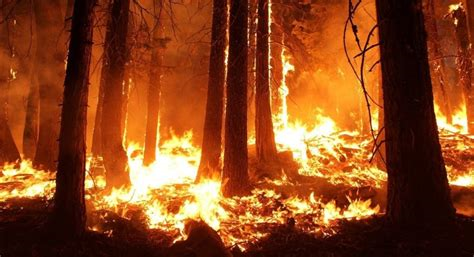Wildfires and Nova Scotia's net-zero targets
Larry Hughes, PhD
20 June 2023
Wildfires have destroyed an estimated three million hectares of forest in Canada so far this year.
In Eastern Canada, Québec had lost almost one million hectares to forest fires by early June.
In Nova Scotia, the Shelburne wildfire in the south of the province consumed over 23,000 hectares of forest before being brought under control. Meanwhile, about 950 hectares were lost to the Tantallon wildfire outside Halifax.

These and other wildfires in the province have displaced thousands of people, put firefighters and first responders in harm's way, destroyed hundreds of homes, and affecting untold numbers of businesses.
The smoke and ash from these fires also resulted in air quality alerts for Nova Scotians living outside immediate fire zones.
The scale of the fires meant their impact was not limited to Nova Scotia.
People living in parts of the northeastern United States have had their lives disrupted by these fires. Smoke has reduced visibility in cities such as New York and interrupted sporting events.
It has also led to health warnings from state officials about the effects of breathing fine particulate matter suspended in the smoke.
However, the loss of Nova Scotia's forestlands to wildfires has other implications.
For the past several years, the European Union's Atmospheric Monitoring Service has been watching wildfires in Canada. It estimates that so far this year, those in Nova Scotia have emitted well over a megatonne of carbon.
(Although much of this carbon would was released as smoke and ash, some combined with oxygen to form carbon dioxide.)
Nova Scotia is losing carbon sinks because of wildfires.
This is of concern because the province will need carbon sinks to help reach its goal of net-zero emissions by 2050.
Sinks store carbon dioxide and can be natural or made by humans.
Natural sinks, also referred to as nature-based solutions, include forests, croplands, and wetlands. These sinks must be protected if they are to store carbon for hundreds of years.
In 2021, Mark McCoy, a student of mine, and I conducted research which showed that Nova Scotia had sufficient natural sinks to let the province achieve net-zero emissions by 2030 if the province met its 2030 emissions target.
The alternative to nature-based solutions is to develop anthropogenic systems that either capture carbon dioxide at the source of the emissions (such as a power station or other industrial process) or remove it from the atmosphere, and then store it.
An example of carbon capture and storage (CCS) is the system developed by Carbon Cure, which captures carbon at cement plants, pumps it into concrete, where it undergoes mineralization to become part of the concrete.
Oil extraction companies in Alberta use a variation of CCS known as carbon capture, utilization, and storage (CCUS). In this case, carbon dioxide is taken from industrial sources and pumped into oil wells to make crude oil flow more easily.
Direct Air Capture (DAC) removes carbon dioxide from the atmosphere and stores it underground in geological structures. It can be used in locations with the appropriate geology, including Iceland and in the Canadian Rockies.
Despite its ability to capture carbon dioxide from any source, DAC is expensive and energy intensive. A paper published in 2019 showed that to meet climate targets using DACs, they would use one-quarter of the world's electricity supply by 2100.
As well as the need to remove excess carbon dioxide from the atmosphere, the province requires Nova Scotia Power to phase out coal by 2030. The federal government expects to have a net-zero electricity grid by 2035.
Nova Scotia Power has developed scenarios (with and without the western side of the Atlantic Loop from Québec) to meet these targets.
However, wildfires put the goal of an electric net-zero energy future at risk.
According to a report in AllNovaScotia.com, wildfires in June in Québec caused three of the generating units at Muskrat Falls to trip and reduced the volume of electricity transmitted by the Labrador-Island Link for eight days.
Other fires in northern Québec caused Hydro Québec to shut down parts of its grid, cutting supply to areas in Montréal and Québec City.
Smoke from wildfires in Eastern Canada reduced the output of solar power in New England by half. In September 2020, smoke from forest fires reduced solar production in California by 30 percent.
If the Nova Scotia government is serious about meeting its net zero targets, it has a choice; either protect the province's natural carbon sinks or be prepared to buy emissions credits to cover the cost of, for example, DAC.
A good place to start would be to require the cleanup of forest windfall caused by extreme weather events such as Hurricane Fiona.
This would reduce the availability of combustible material for wildfires and could be used in Nova Scotia's moribund wood-heating program.
An abridged version of this article appeared in AllNovaScotia.com on 20 June 2023.